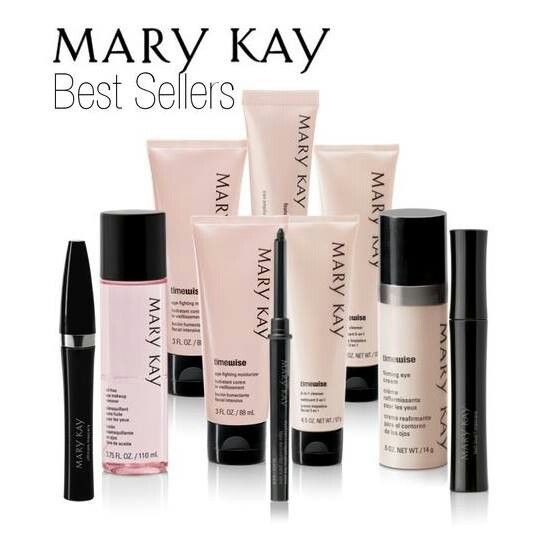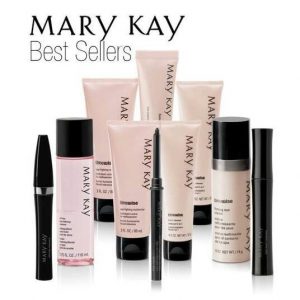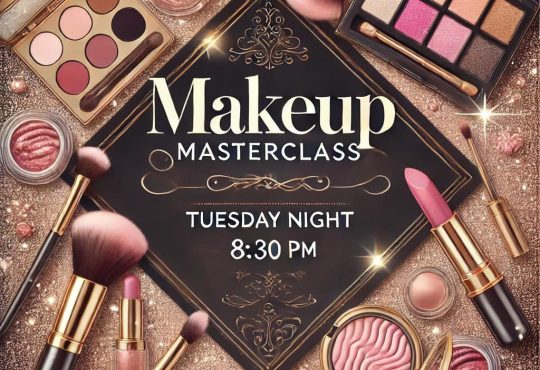
Why You Won’t Make Money Selling MLM Products
 One of the big selling points for Mary Kay (and really for any multi-level marketing company) is the PRODUCTS. The person trying to recruit you shows you how you buy a product for $1, sell it for $2, and you’ve instantly doubled your money. You’d have to be an idiot to not be able to turn a profit, right? Surely those meanies at Pink Truth who say 99% of people who participate in MLM actually lose money must be lying!
One of the big selling points for Mary Kay (and really for any multi-level marketing company) is the PRODUCTS. The person trying to recruit you shows you how you buy a product for $1, sell it for $2, and you’ve instantly doubled your money. You’d have to be an idiot to not be able to turn a profit, right? Surely those meanies at Pink Truth who say 99% of people who participate in MLM actually lose money must be lying!
It’s a great way to lure people in. It sounds so easy! And if you’re someone who happens to like Mary Kay products, you think it’ll be simple to sell them. Maybe you’ll only sell a little, but you’ll still turn a profit.
This is part of the grand deception behind MLM. They HAVE to have a product for you to sell, or the pyramid scheme that they’re promoting will be obvious. With a product in place, it’s now no longer so clear whether or not it’s a pyramid scheme. The truth is that MLMs are nothing more than endless chain recruiting schemes, and the products are intended to make them LOOK legitimate.
How do you know that Mary Kay or any other MLM is really a recruiting scheme? What do they talk about the second you sign up? After they talk you into buying inventory, the talk turns to recruiting people. They might not be so obvious about it, suggesting that you bring “a guest” or “a face model.” But subtle or not, the focus turns to getting new people into the scheme. Yes, there is still talk about the product because it is the bait that helps bring people in and it’s necessary to be able to claim you’re not a pyramid scheme.
But women in Mary Kay (and those in other MLMs) find out quickly that there is a very thin market for retail sales. Yes, some products are sold. Yes, there is a tiny fraction of women who sell large amounts of products. But a large, consistent volume of products is NOT sold to third party consumers. (Lots is sold to consultants, and most of that product never ends up with a third party customer.) Why is it so hard to actually retail these products?
Robert FitzPatrick of Pyramid Scheme Alert has been researching MLMs for decades. He says:
Yet in these schemes, very little of the products are actually sold to anyone other than the sales people, and virtually none of the salespeople earns a net profit from retailing products to consumers. The typical company of this type will claim it is a direct selling business and will often highlight “retail” sales. However, the average number of retail customers per sales representative is far too small to support a retail business. The retail selling is therefore only part of the camouflage. This business is not based on “direct selling” but on recruiting other sales representatives in a pyramid fashion.
The reasons why retailing does not occur are pretty simple:
- The prices of the products are high when compared to products of similar quality available through traditional or online retail outlets. (Mary Kay products are on par with what you will find in Target, yet they’re priced at department store prices and consultants will tell you they’re department store quality.)
- The products are undifferentiated. Similar products are widely available in stores and online. (Have you been to Sephora or Ulta? Have you shopped on eBay or Amazon? There are a zillion makeup and skin care products, and Mary Kay is just another brand.)
- In the person-to-person selling model, choice is restricted and there is the pressure of a personal relationship. In stores or online, the choices are unlimited and the sale most often comes with no pressure. (Mary Kay’s product line is limited, and consultants leverage their personal relationships to sell more, with purchases leading to repeat contacts and requests to hold parties and come to events. Customers just don’t want to do that anymore.)
- There is too much competition selling the product to make profitable retail sales. There are an unlimited number of sales representatives with no territories. Distributors are encouraged to recruit more distributors, who are naturally their competitors. They enroll their friends, family, and neighbors. When they do so, they not only lose potential customers, they also create new competitors.
- There isn’t a big enough margin in order to turn a profit. Distributors find that they can’t sell products at “suggested retail” pricing, and must discount, often heavily. Then factor in the cost of supplies, free samples, advertising, shipping, and all the other costs related to selling the products, and any hope of a reasonable profit vanishes.
- MLMs promote and reward recruiting far more heavily than selling. New recruits are pushed toward recruiting and away from retailing, even before the new recruits realize how impossible it is to turn a profit retailing. The only way to be profitable (with a minuscule number of exceptions) is to get to the upper levels of the hierarchy, and recruiting is the only way to move up the hierarchy.
Do some women make money retailing Mary Kay products? Of course. But not at a level sufficient to support themselves and their families. They are making pocket change. And when you compare what is made retailing to the time devoted to the venture, you find that these women are making less than minimum wage. It’s an “opportunity” that carries great risks (inventory costs and other costs that the consultant bears), almost guarantees that the consultant will lose money, and provides a very low level of profit for the very few who may be lucky enough to find a way to not lose money.





 Visit the
Visit the
And the dirtly little secret in all of this is how the MLM corporation views their distributors…as customers. The MLM business plan is to find folks who will order far more product than they can ever use or sell, then recruit others to do the same…all at the expense of the MLM distributor.
The MLM does not track sales from distributors to outside customers because the distributor is their customer! Everything in the MLM world is paid for by the distributors. Corporate salaries, operational costs, kingpin commissions, the big conferences, speaking fees, trips, cars…everything. MLMs like Mary Kay have no other revenue source.
Once you follow the money in MLM to reveal how the cash flows, it all becomes clear. You can take away the product and the system behavior does not change. Incentives remain the same. Orders become buy-ins. And one advantage of the naked pyramid is no product piling up in the homes of the downline, and thus no environmental impact from all that unsold product finding its way into the landfill.
Oh, and success rates in naked pyramid schemes are actually higher than in MLM since there is no product cost putting a drag on upline cash flow. (See Jon Taylor’s research for the FTC).
The retail store markup on cosmetics is 3 to 5x the wholesale. They can have a 50% off clearance to get rid of slow-moving or seasonal products and not lose money.
What Lazy Gardens said. I used to work in retail, and the profit margins had to be much greater than 50% to survive as a business. 50% margin was what prices were sometimes “slashed” to get foot traffic. And most of what we sold were durable goods with no expiration dates.
50% only sounds good to someone who’s unfamiliar with normal retail mark-ups. Fortunately for Mary Kay, that’s most people.
Why don’t they just make the products affordable then?
The business model prevents it. Those palms in the upline won’t get greased by themselves. MLMs everywhere have overpriced products. Since the products are unappealing, the carrot to attract buyers is the pretend “business opportunity.” That’s why the majority of buyers are part of the pyramid: if they didn’t think there might be a paycheck to be had in buying “inventory,” they wouldn’t buy the stuff at all.